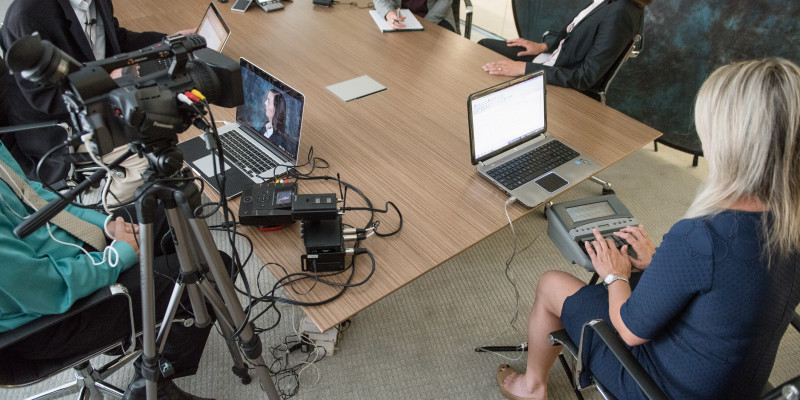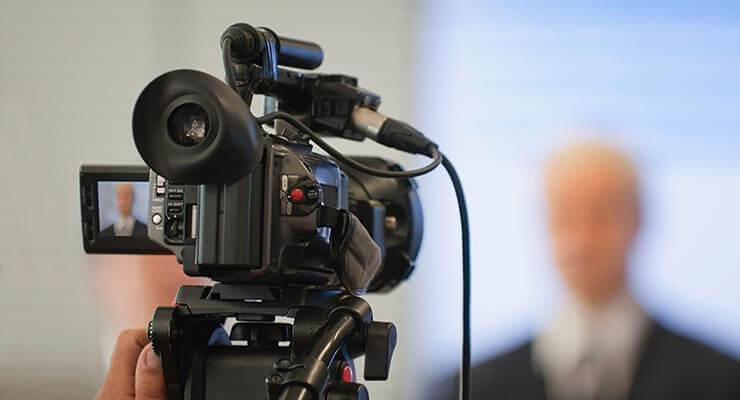Why Legal Videography is Becoming an Invaluable Tool for Attorneys
Why Legal Videography is Becoming an Invaluable Tool for Attorneys
Blog Article
Why Legal Videography Is Crucial for Accurate Court Recordings
The duty of legal videography in courtroom settings can not be overstated, as it offers as a necessary device for maintaining the integrity of court documents. The implications of integrating lawful videography right into typical court practices raise important inquiries concerning its wider influence on the lawful system.
Relevance of Visual Evidence
In the realm of lawful process, the value of visual proof can not be overemphasized. Aesthetic evidence works as a powerful tool in developing facts, corroborating testimonies, and enhancing the total clarity of a situation. This sort of evidence, that includes photographs, videos, and layouts, can supply a tangible context that spoken descriptions typically do not have, thus using courts and courts a clearer understanding of the circumstances bordering an instance.
In addition, aesthetic proof help in the retention of info. Human cognition is inherently aesthetic, and people are most likely to keep in mind and comprehend info provided in an aesthetic style. In the courtroom, this can be important, as compelling aesthetic evidence can sway viewpoints and enhance the narrative presented by legal representatives.
In addition, the use of visual evidence can lessen misunderstandings and obscurities that commonly emerge from spoken exchanges. By providing a direct representation of events, visual evidence aids to eliminate subjective interpretations and fosters a much more objective assessment of the facts. The assimilation of aesthetic proof into lawful process not only strengthens the honesty of the judicial process yet also enhances the likelihood of accomplishing a just outcome.
Capturing Non-Verbal Signs
Making use of innovative videography techniques can considerably enhance the capture of non-verbal hints throughout legal proceedings. Non-verbal communication, including face expressions, body movement, and eye contact, plays a critical role in sharing feelings and intents that may not be clearly stated in spoken statement. legal videography. Legal videography employs high-def cameras and strategic angles to ensure that these refined cues are recorded with quality and accuracy
The capability to assess non-verbal behavior can provide important context to statements made throughout court sessions. A witness's unwillingness or self-confidence can be interpreted through their posture or motions, possibly affecting the court's perception of credibility. Furthermore, using close-up shots can assist focus on a speaker's expressions, enabling for an extra nuanced understanding of the testament.
In addition, integrating multiple video camera angles can produce an extensive sight of communications, highlighting dynamics in between celebrations involved. This complex strategy not just enhances the accuracy of the court record however also aids in preserving the stability of the judicial procedure - legal videography. Eventually, recording non-verbal cues via legal videography promotes a richer, much more complete depiction of court room process

Enhancing Testimony Reliability
The integrity of testimony can be substantially reinforced via using premium lawful videography. Video recordings serve as an objective tool that captures not only the spoken words of witnesses but likewise the nuances of their delivery, including tone, Read Full Article pacing, and emotional expressiveness. This complex documents provides a clearer understanding of the witness's trustworthiness and intents, which can be critical in legal process.
Furthermore, lawful videography reduces the capacity for misinterpretations that might occur from composed transcripts alone. When jurors can observe a witness's demeanor and body movement in conjunction with their statement, they are better geared up to analyze the credibility and dependability of the proof offered. This visual context can reinforce the testimonial narrative, making it extra compelling and qualified.
Furthermore, the presence of a video recording can hinder prospective incongruities in testimony. Witnesses may be a lot more cautious in their declarations when they understand they are being videotaped, bring about more precise and genuine accounts. Generally, high-quality legal videography enhances the stability of testament, making sure that the court has access to a full and genuine representation of the truths as communicated by the witnesses.
Sustaining Appeals and Reviews
Lawful videography plays a critical duty in supporting appeals and testimonials by providing an extensive aesthetic record of court room proceedings. This visual paperwork catches not only the talked words of witnesses and lawyers however also the subtleties of body movement, tone of voice, and courtroom characteristics. Such aspects can be critical in comprehending the context of testimonies and debates provided.
In the appellate procedure, where the emphasis is on mistakes of legislation and step-by-step justness, a video clip record can offer as a crucial tool for appellate courts. It allows courts to review look at here now the initial test context, making sure that choices are based upon a total understanding of the process. The ability to visually examine the disposition of witnesses or the interactions in between events can reveal understandings that composed records may forget.

In addition, lawful videography can assist in clarifying uncertainties in statements or procedural rulings, therefore reinforcing the basis for a charm. By using a trustworthy, unbiased account of what taken place in court, lawful videography not just supports the additional reading stability of the lawful procedure however additionally equips all celebrations entailed to make informed decisions regarding their situations.
Simplifying Court Room Procedures
Enhancing court room efficiency, legal videography enhances procedures by supplying instant accessibility to aesthetic documents of process. This modern technology enables courts, lawyers, and courts to review vital testament and evidence, making certain that all celebrations have a clear understanding of the case. By capturing the nuances of spoken and non-verbal interaction, videography enriches the record, making it easier to grasp the context and weight of testaments.

Furthermore, video clip recordings can help with remote engagement in hearings, enabling for better adaptability in organizing and engagement, which is particularly beneficial in complex situations entailing numerous stakeholders.
Conclusion
Finally, lawful videography plays a crucial role in making sure accurate court recordings by providing crucial aesthetic evidence that catches both verbal and non-verbal communication. This method improves the integrity of testaments, supports appellate testimonials, and simplifies courtroom procedures. By cultivating a thorough understanding of court room dynamics, legal videography eventually contributes to more equitable judicial outcomes, strengthening the honesty of the lawful system and helping with notified decision-making.
Report this page